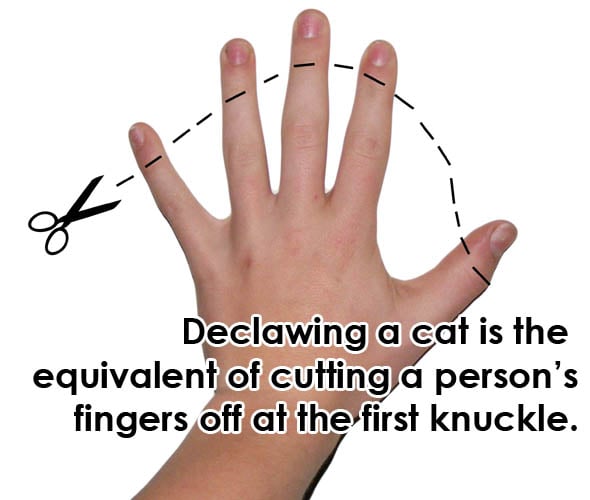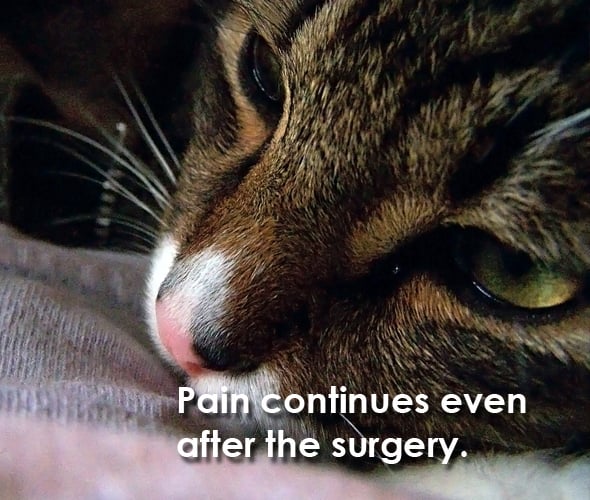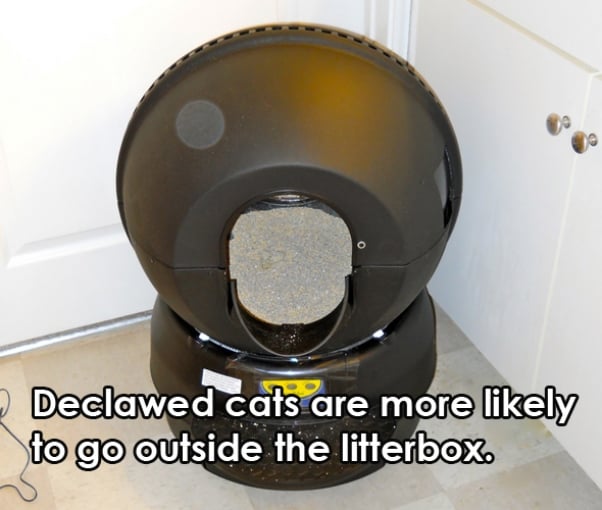Declawing is a painful and permanently crippling procedure that involves removing a cat’s digits down to the first knuckle. The following are eight reasons why you should never declaw your feline friend:

Ouch!

Cats scratch to exercise and enjoy themselves, maintain the condition of their nails, and stretch their muscles.

While we hope that your cat remains safely indoors at all times, if he or she were ever to get outside without claws, your cat would be far more vulnerable to predators and abusers.

Many people think that declawed cats are safer around babies, but in fact, the lack of claws makes many cats feel so insecure that they tend to bite more often as a means of self-protection.

Cats are in pain when they awake from the surgery, and the pain continues afterward. Nails can grow back inside the paw, causing extreme pain that you can’t see.
Without claws, even house-trained cats might start “doing their business” outside the litterbox in an attempt to mark their territory.

Our toes are crucial to our balance, and it’s no different for cats! Because of impaired balance after the procedure, declawed cats have to relearn how to walk, much as a person would after losing his or her toes.

Nearly two dozen countries—including Australia, England, and Japan—ban or severely restrict declawing surgeries. And many veterinarians in the United States refuse to perform the procedure.
What You Can Do Instead
- Trim your cat’s nails regularly. When the cat is relaxed and unafraid, gently press on his or her toes until the claws extend. Use a pair of nail clippers, and cut only the tip of the nail, taking care not to damage the vein, or “quick.” The nail hook is what tears upholstery, so removing it virtually eliminates the potential for damage.
- Buy multiple scratching posts. Ideally, you should have two or more scratching posts in your home. Make sure that they’re sturdy and tall enough to allow your cat to stretch (3 feet or taller). Soft, fluffy carpeted posts won’t fulfill your cat’s clawing needs, so look for rougher posts.
- Teach your cat where to scratch and where not to scratch. Encourage your cat to use the scratching posts by sprinkling catnip on the posts once a week. Discourage your cat from scratching furniture by using a loud, firm voice whenever he or she starts to scratch—cats don’t like loud noises! Never use physical force. Instead, you might try using a squirt gun full of lukewarm water directed at your cat’s back.







